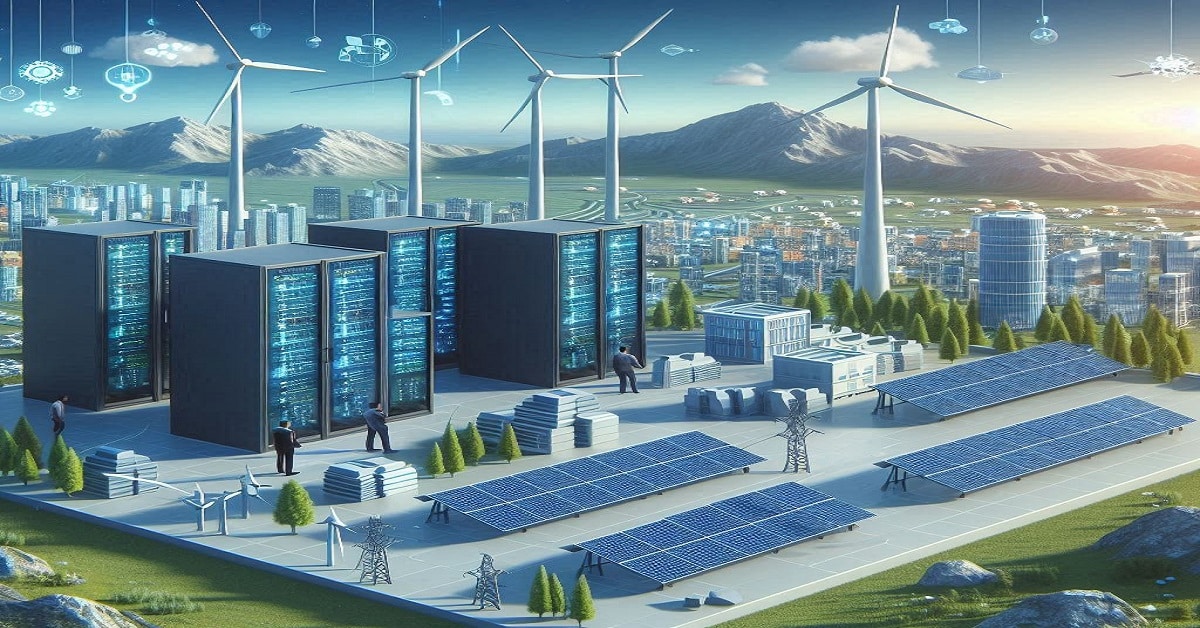
By taking the initiative to seek out new methods to secure power for the long term, the industry can lead the way while cutting costs.
Opinion paper by François Sterin, Chief Operating Officer (COO) at Data4 Group
Multiple aspects of the data center industry are transforming dramatically. Not least the approach to sourcing energy, with the data center and energy sectors becoming more intrinsically linked over time.
The ever-growing clamor for all industries to improve sustainability has made it necessary for the sector to alter its way of thinking on sourcing power, becoming proactive in seeking new methods rather than passive in its energy consumption. However, the urgency for change has become even starker in the past three or four years.
That’s partly because of the rise in generative AI putting more demand on data centers.
To compound the challenge, the planet has seen an unprecedented energy emergency that has gone global. This began during the COVID pandemic and has hit true crisis levels following Russia’s invasion of Ukraine in early 2022. Electricity prices have since seen record highs in certain markets, while oil prices have reached their highest level in over 15 years.
Becoming flexible
These price swings mean everyone is looking to be more flexible in their energy use. At the same time, the trends present an opportunity for the data center sector to get ahead of the game. By becoming energy managers as opposed to just consumers, the market’s players can find both more efficient and more cost-effective ways to source power. Innovative renewable options may be a highly attractive avenue in this regard.
One trend that’s being seen as a result is data center providers moving closer to the energy sector for solutions. And for them, it’s increasingly likely that optimizing efficiency won’t just be about being close to the grid, but also about being close to the power-generation site – or even generating or storing power on site.
Such transitions were illustrated by the announcement in early March that Amazon Web Services (AWS) had acquired Talen Energy’s data center campus at a nuclear power station in Pennsylvania, United States, for $650 million and planned to develop a 960MW campus.
On top of that, the growing commitment to this cause has been demonstrated by last September’s launch of the pan-European initiative the Net Zero Innovation Hub for Data Centers by Danish multinational company Danfoss, along with Google, Microsoft, and Schneider Electric. This has been introduced in recognition of the need for a swift societal shift to a zero-carbon economy, which cannot be solved by single businesses alone.
Acknowledging how crucial such initiatives are to move the conversation forward, Data4 joined the hub early this year. The company realizes that it will take a mix of strategies and technologies for the industry to achieve its green aims, so a coordinated and multisectoral approach between different players is needed to turn discussion into effective action.
Solar and wind power
But that move is just a single prong of Data4’s multifaceted innovation in power. With the way the industry and society in general are going, it is exploring new ways of linking up with energy players.
This has culminated in Data4 striking recent major deals with Eurowatt and Photosol, French leaders in renewable energy. Consisting of long-term contracts, these two so-called power purchase agreements (PPAs) are a good illustration of the stronger and more robust commitment that data center players are looking to make to forward-looking energy initiatives.
These deals also reflect our belief that there will be no single solution to ensuring long-term, sustainable energy sources and that it will require a mix of strategies under a wider, more diverse energy portfolio. This is because the contracts are with a wind energy and solar energy company, covering three wind farms in France with Eurowatt and three photovoltaic parks with Photosol. The deals complement each other by each providing a type of energy that’s often available when the other is absent, enabling a more constant power supply.
They further spread the risk by involving power sources in different parts of the country, capitalizing on locations’ varying climatic conditions. For instance, the Photosol contract covers photovoltaic parks in both the Alpes-Maritimes region on France’s south-east coast and the northerly Loir-et-Cher region south of Paris.
Having established these solid agreements, it could set the stage for other future promising collaborations between the companies both in France and internationally. Data4 is also looking into potentially introducing similar models in markets such as Italy, Spain, and Poland. But however these initiatives pan out, they can help create possible templates for how to approach energy for data centers in future.
Considering all avenues
Innovative deals are therefore set to pave a way forward for the industry, alongside many other energy initiatives. As examples, Data4, which has sought to put itself at the forefront of the sustainability drive throughout its operations, is harnessing strategies and exploring options from building data centers with low-carbon concrete to reusing heat with the creation of the first bio-circular data center near Paris.
Densification of racks in data centers is also taking place to cater for power demand linked in particular to artificial intelligence.
On top of that, although the rapid growth of AI is creating a surging need for extra capacity and thus additional energy demands, AI itself can help counteract some of these issues to an extent. This can be achieved through methods such as helping optimize power consumption and enabling parameters to be changed in real time. At present, the growth of AI is outpacing what can be optimized, but more efficient methods enabled by the technology could change the outlook over time.
No magic remedy
The key thing for the industry to remember, however, is that it’s unlikely there will be a single silver bullet when it comes to both sourcing power and achieving energy efficiency. That means many methods should be considered and used in parallel to help optimize power use in the data center. The widely different players involved, including data center providers, hyperscalers, content companies and energy providers, also need to come together to work out how to progress in a way that creates benefits for all.
Certainly, in the current climate, options like green PPAs help to kill two birds with one stone – both providing renewable sources of energy and some financial predictability. Optimally locating data centers to maximize use of local energy resources and striking up closer links with the power industry will also grow in importance moving forward.
If data center providers can take steps to actively address these future energy needs, they can truly become a conduit for energy management. This will help them to set an example not only for their own sector, but for multiple other industries. It will also lay the foundations for the next stages of the market’s sustainable energy journey.

